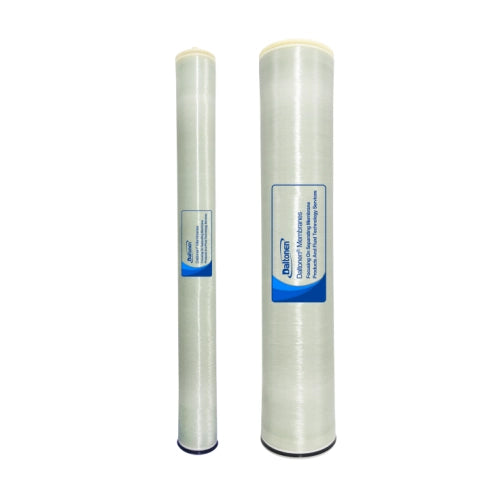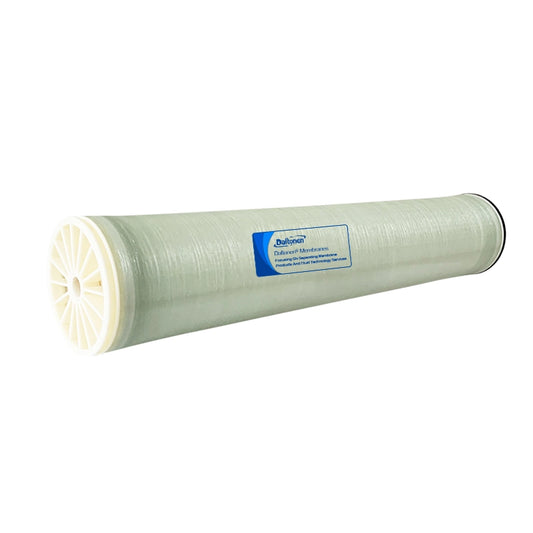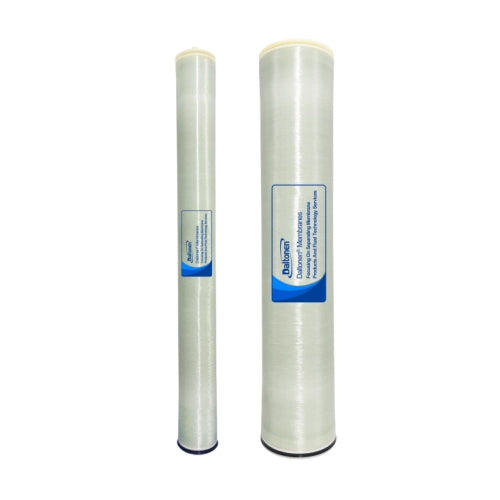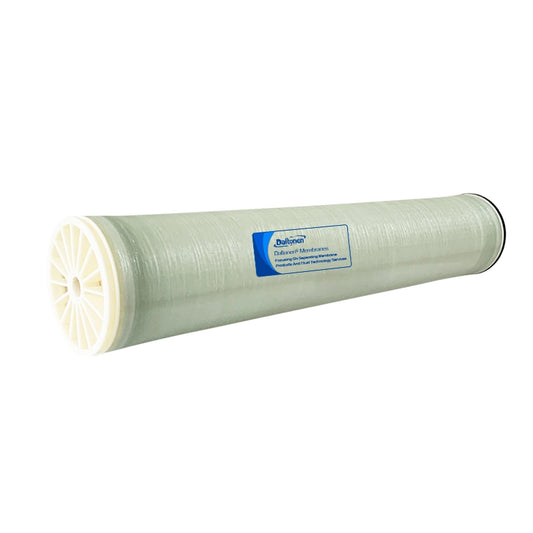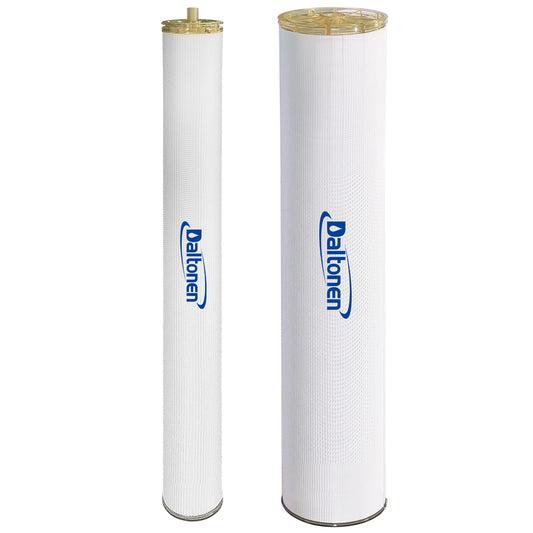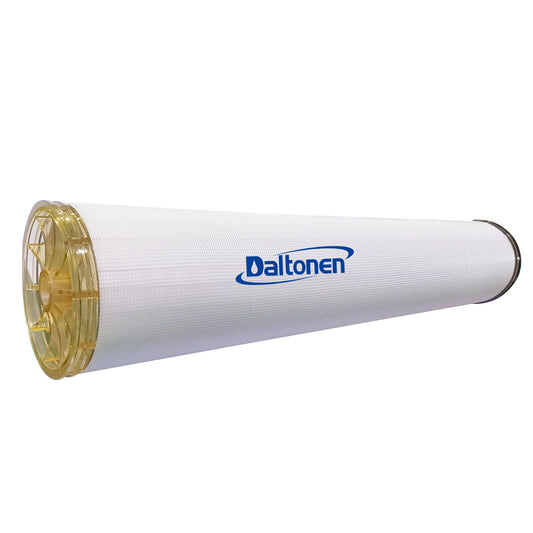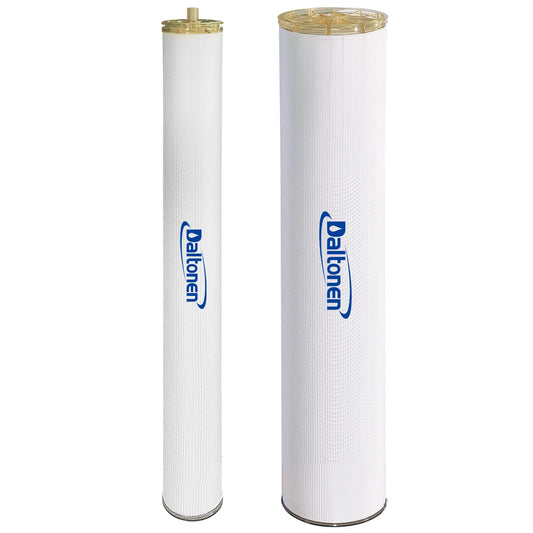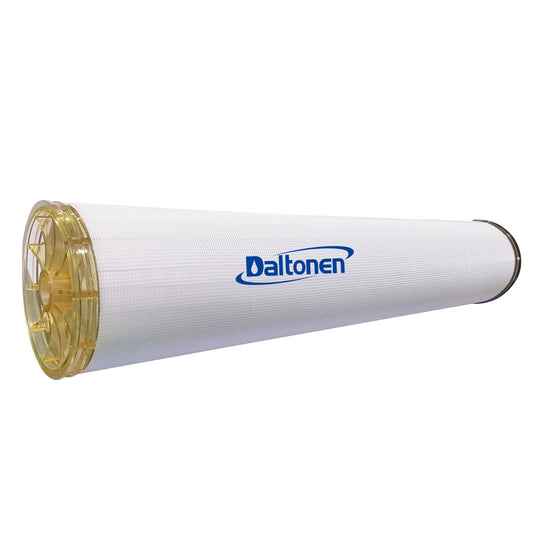Traditional Evaporation Concentration
10 Apr 2025
1. Scheme Background
1.1 Traditional Evaporation Concentration
Traditional evaporation concentration is a widely used method in various industries such as food processing, pharmaceuticals, and chemical engineering. It involves heating a liquid solution to evaporate the solvent, thereby increasing the concentration of the solute. This method has been employed for centuries and is relatively simple in concept. However, it also comes with several drawbacks. For example, it requires a significant amount of energy to heat the solution, which can be costly and inefficient. Additionally, the high temperatures involved may degrade heat-sensitive substances, leading to a loss of product quality. In the food industry, this can result in the loss of nutrients and flavor compounds. In pharmaceuticals, it may affect the efficacy of active ingredients. The process is also relatively slow, as it depends on the rate of evaporation, which can be limited by factors such as the boiling point of the solvent and the surface area exposed to heat.

1.2 Problems with Traditional Methods
The limitations of traditional evaporation concentration have led to the search for more efficient and effective alternatives. One major issue is the high energy consumption, which not only increases operational costs but also has a negative environmental impact due to the carbon footprint associated with energy production. Another problem is the potential for product degradation, which can be particularly critical in industries where product quality is paramount. The slow processing speed can also be a bottleneck in production lines, reducing overall productivity. Moreover, the scalability of traditional evaporation methods can be challenging, as increasing the volume of solution to be concentrated often requires proportionally larger and more expensive equipment. This can be a significant barrier for small and medium-sized enterprises looking to expand their production capacity.
1.3 Advantages of Membrane Technology
Membrane technology has emerged as a promising alternative to traditional evaporation concentration methods. It offers several advantages that address the limitations of traditional methods. Firstly, membrane technology operates at lower temperatures compared to evaporation, which helps to preserve the quality of heat-sensitive substances. This is particularly beneficial in the food and pharmaceutical industries, where maintaining the integrity of nutrients, flavors, and active ingredients is crucial. Secondly, membrane processes are generally more energy-efficient, as they do not require the extensive heating associated with evaporation. This leads to lower operational costs and a reduced environmental impact. Additionally, membrane technology can be more easily scaled up or down to meet varying production demands, providing greater flexibility for businesses. The process is also faster than traditional evaporation, as it relies on the selective permeation of solvents through a membrane, which can be optimized for specific applications. This increased speed can significantly enhance productivity and throughput in industrial settings.# 2. Process Design
2.1 Pretreatment Stage
The pretreatment stage is crucial for preparing the feed solution to ensure optimal performance of the subsequent membrane processes. In this stage, several steps are typically carried out to remove large particles, adjust the pH, and stabilize the solution. For example, filtration using a 5-micron filter is often employed to remove suspended solids that could clog the membrane pores. This step reduces the risk of fouling and extends the membrane's lifespan. Additionally, chemical pretreatment, such as adding coagulants or pH adjusters, may be necessary to improve the solution's compatibility with the membrane material. Data from industrial applications show that proper pretreatment can reduce membrane fouling rates by up to 40%, significantly enhancing the efficiency and longevity of the membrane system.
2.2 Tubular Ultrafiltration Membrane (UF) Treatment
Tubular ultrafiltration membranes play a vital role in the process design by removing colloids, bacteria, and large organic molecules from the feed solution. The tubular configuration of these membranes offers several advantages. Firstly, the larger diameter of the tubes allows for higher flow rates and reduces the likelihood of membrane fouling compared to hollow fiber membranes. Studies have shown that tubular UF membranes can achieve a flux rate of 50–100 L/m²·h, depending on the feed solution's characteristics and operating conditions. This high flux rate ensures efficient separation and reduces the overall footprint of the membrane system. Moreover, the ability to backflush the tubular membranes easily helps maintain their performance and prolongs their service life. The removal efficiency of tubular UF membranes for particles larger than 0.01 microns can reach over 99%, providing a high-quality permeate for the subsequent nanofiltration stage.
2.3 Nanofiltration Membrane (NF) Concentration
Nanofiltration membranes are employed in the concentration stage to selectively remove dissolved salts and small organic molecules while allowing water and other small molecules to pass through. NF membranes have pore sizes in the range of 1–10 nanometers, which enables them to achieve a high rejection rate for multivalent ions and organic compounds with molecular weights above 200–300 Daltons. The rejection rate for these substances can exceed 90%, resulting in a concentrated solution with significantly reduced ionic strength and organic load. This stage is particularly important for applications such as the concentration of fruit juices, where the removal of salts and organic acids is necessary to enhance the product's flavor and stability. The concentration factor achievable with NF membranes can range from 5 to 20, depending on the specific application and operating conditions. The use of NF membranes also helps to conserve energy compared to traditional evaporation methods, as the process operates at lower pressures and temperatures.
2.4 Post-treatment
The post-treatment stage is designed to further refine the concentrated solution and ensure it meets the desired product specifications. This stage may involve additional steps such as pH adjustment, sterilization, or packaging. For instance, in the food industry, the concentrated product may need to be adjusted to a specific pH to maintain its taste and stability during storage. Sterilization processes, such as UV treatment or pasteurization, may also be applied to ensure the product's safety and shelf life. Data from case studies indicate that proper post-treatment can improve the product's quality and consistency, leading to higher customer satisfaction and reduced waste. The final product is then packaged and ready for distribution, completing the entire process design from feed solution to finished product.# 3. Membrane Selection
3.1 UF Membrane Selection
The selection of ultrafiltration (UF) membranes is a critical step in the process design, as it directly impacts the efficiency and effectiveness of the pretreatment stage. UF membranes are designed to remove particles, colloids, and microorganisms from the feed solution, ensuring that the subsequent membrane processes operate smoothly and efficiently. When selecting UF membranes, several factors must be considered:
-
Membrane Material: The choice of membrane material is crucial for compatibility with the feed solution and resistance to fouling. Common materials include polyvinylidene fluoride (PVDF), polysulfone (PS), and polyethersulfone (PES). PVDF membranes, for example, are known for their high chemical resistance and thermal stability, making them suitable for a wide range of applications. Studies have shown that PVDF membranes can maintain high flux rates even in the presence of challenging feed solutions, with flux rates ranging from 30 to 70 L/m²·h.
-
Pore Size: The pore size of UF membranes typically ranges from 0.01 to 0.1 microns. This size range allows for the effective removal of bacteria and large organic molecules while permitting the passage of water and smaller solutes. The selection of pore size depends on the specific contaminants present in the feed solution. For instance, in applications involving the treatment of surface water, a pore size of 0.03 microns may be sufficient to remove most bacteria and suspended solids.
-
Membrane Configuration: Tubular UF membranes are often preferred due to their ease of cleaning and lower fouling propensity. As mentioned in Section 2.2, tubular membranes can achieve high flux rates, often exceeding 50 L/m²·h. This configuration also allows for easy backflushing, which helps maintain membrane performance over time. In contrast, hollow fiber membranes, while offering higher surface area-to-volume ratios, are more susceptible to fouling and require more complex cleaning procedures.
-
Cost Considerations: The cost of UF membranes is an important factor in the selection process. PVDF membranes, while more expensive than some other materials, offer long-term cost savings due to their durability and resistance to fouling. The initial investment in high-quality UF membranes can be justified by the reduced frequency of membrane replacement and lower operational costs over the membrane's lifespan.
3.2 NF Membrane Selection
Nanofiltration (NF) membranes are essential for the concentration stage of the process design, as they selectively remove dissolved salts and small organic molecules while allowing water and other small molecules to pass through. The selection of NF membranes involves careful consideration of the following factors:
-
Membrane Material: NF membranes are typically made from materials such as polyamide, which offers high rejection rates for multivalent ions and organic compounds. Polyamide membranes are known for their excellent selectivity and high flux rates, making them suitable for applications requiring high separation efficiency. The rejection rate for multivalent ions can exceed 90%, ensuring a high-quality concentrated solution.
-
Pore Size and Rejection Rate: NF membranes have pore sizes in the range of 1–10 nanometers, which allows them to achieve high rejection rates for substances with molecular weights above 200–300 Daltons. The specific pore size and rejection rate required depend on the application. For example, in the concentration of fruit juices, an NF membrane with a pore size of 3 nanometers may be used to remove salts and organic acids effectively, enhancing the product's flavor and stability. The concentration factor achievable with NF membranes can range from 5 to 20, depending on the specific application and operating conditions.
-
Operating Conditions: The performance of NF membranes is influenced by factors such as pressure, temperature, and feed solution composition. Operating at optimal conditions can maximize the membrane's efficiency and lifespan. Studies have shown that NF membranes operate most efficiently at pressures ranging from 5 to 15 bar and temperatures between 20 and 30°C. Maintaining these conditions can help achieve high flux rates and rejection rates while minimizing energy consumption.
-
Cost and Scalability: The cost of NF membranes is a significant consideration, especially for large-scale industrial applications. While NF membranes are generally more expensive than UF membranes, their ability to achieve high separation efficiency and reduce energy consumption can justify the investment. Additionally, NF membranes can be more easily scaled up or down to meet varying production demands, providing flexibility for businesses looking to expand their operations.# 4. Key Considerations

4.1 Membrane Fouling Control
Membrane fouling is a significant challenge in membrane processes, which can lead to reduced flux rates, increased energy consumption, and higher operational costs. Effective fouling control is crucial for maintaining the efficiency and longevity of membrane systems.
-
Mechanisms of Fouling: Fouling occurs due to the accumulation of particles, organic substances, and microorganisms on the membrane surface. In the context of this process, the primary sources of fouling are suspended solids and organic matter present in the feed solution. For example, in the pretreatment stage, if the 5-micron filtration is not properly maintained, larger particles can pass through and cause severe fouling on the UF membranes.
-
Fouling Control Strategies: Several strategies can be employed to mitigate fouling. Chemical cleaning is a common method, involving the use of cleaning agents such as sodium hypochlorite or citric acid to remove foulants from the membrane surface. Studies have shown that periodic chemical cleaning can restore membrane flux rates by up to 80%. Physical cleaning methods, such as backflushing, are also effective, especially for tubular UF membranes. Backflushing can be performed at regular intervals to dislodge foulants and maintain membrane performance.
-
Operational Parameters: Optimizing operational parameters can also help reduce fouling. For instance, maintaining a low feed solution concentration can minimize the deposition of solutes on the membrane surface. Additionally, controlling the flow rate and temperature can influence the fouling rate. Data from industrial applications indicate that operating at a flow rate of 5–10 L/min and a temperature of 25–30°C can significantly reduce the likelihood of fouling in UF and NF membrane systems.
4.2 Retention of Active Ingredients
The retention of active ingredients is critical in applications such as pharmaceuticals and food processing, where the integrity of the product is paramount. Membrane technology must be designed to selectively retain these active components while allowing the removal of unwanted substances.
-
Retention Mechanisms: The retention of active ingredients depends on the pore size and selectivity of the membrane. NF membranes, with their pore sizes in the range of 1–10 nanometers, are particularly effective in retaining active ingredients with molecular weights above 200–300 Daltons. For example, in the concentration of fruit juices, NF membranes can retain flavor compounds and nutrients while removing salts and organic acids.
-
Optimization of Retention: The retention efficiency can be optimized by selecting appropriate membrane materials and pore sizes. Polyamide NF membranes, for instance, offer high rejection rates for multivalent ions and organic compounds, making them suitable for retaining active ingredients. Additionally, adjusting the operating conditions, such as pH and ionic strength of the feed solution, can influence the retention behavior of the membrane.
-
Case Studies: Industrial case studies have demonstrated the effectiveness of NF membranes in retaining active ingredients. In a study involving the concentration of a pharmaceutical solution, an NF membrane with a pore size of 3 nanometers achieved a retention rate of over 95% for active ingredients, while effectively removing impurities and reducing the ionic strength of the solution.
4.3 Endpoint Determination of Concentration
Accurate determination of the endpoint of concentration is essential for ensuring the desired product quality and consistency. This involves monitoring the concentration of the solute and determining when the desired level has been achieved.
-
Monitoring Methods: Various methods can be used to monitor the concentration endpoint. Conductivity measurements are commonly employed to track the ionic strength of the solution. For example, in the NF concentration stage, a significant increase in conductivity indicates a higher concentration of dissolved salts and active ingredients. Additionally, spectroscopic techniques, such as UV-Vis or near-infrared (NIR) spectroscopy, can be used to monitor the concentration of specific solutes.
-
Endpoint Criteria: The endpoint criteria depend on the specific application and desired product specifications. In the food industry, the endpoint may be determined based on the desired flavor profile and stability of the product. For instance, in the concentration of fruit juices, the endpoint may be reached when the concentration factor reaches 10, resulting in a significant reduction in water content and an enhanced flavor profile.
-
Automation and Control: Implementing automated control systems can improve the accuracy and reliability of endpoint determination. Sensors and control algorithms can be used to continuously monitor the concentration and adjust the operating conditions in real-time. For example, an automated system can stop the concentration process when the desired conductivity or solute concentration is achieved, ensuring consistent product quality.# 5. Scheme Advantages
5.1 Energy Efficiency and Cost Reduction
The membrane-based concentration scheme offers significant energy savings compared to traditional evaporation methods. Traditional evaporation relies on heating large volumes of liquid, which is energy-intensive and costly. In contrast, membrane processes operate at lower temperatures and pressures, reducing energy consumption by up to 60%. For example, in the food industry, where large-scale concentration is common, the use of nanofiltration (NF) membranes can achieve the same concentration levels with much lower energy input. This not only lowers operational costs but also reduces the carbon footprint associated with energy production, making the process more environmentally friendly.
5.2 Preservation of Product Quality
One of the key advantages of membrane technology is its ability to preserve the quality of heat-sensitive substances. Traditional evaporation methods often degrade active ingredients, nutrients, and flavor compounds due to high temperatures. Membrane processes, however, operate at lower temperatures, ensuring that these critical components are retained. For instance, in the pharmaceutical industry, the integrity of active ingredients is crucial for the efficacy of drugs. Studies have shown that membrane concentration can maintain the activity of pharmaceutical compounds with a retention rate of over 95%. In the food industry, the preservation of flavor compounds and nutrients leads to higher-quality products with better taste and nutritional value.
5.3 Enhanced Processing Speed and Productivity
Membrane technology significantly speeds up the concentration process compared to traditional evaporation. The selective permeation of solvents through membranes allows for faster separation and concentration rates. For example, tubular ultrafiltration (UF) membranes can achieve flux rates of 50–100 L/m²·h, depending on the feed solution's characteristics. This high flux rate ensures efficient separation and reduces the overall processing time. Additionally, the ability to scale membrane systems more easily to meet varying production demands enhances productivity. In industrial settings, this increased speed can lead to higher throughput and better overall efficiency.
5.4 Scalability and Flexibility
Membrane-based concentration systems offer greater flexibility in terms of scalability. Traditional evaporation methods often require proportionally larger and more expensive equipment to handle increased volumes of solution. In contrast, membrane systems can be easily scaled up or down to meet different production demands. This flexibility is particularly beneficial for small and medium-sized enterprises looking to expand their production capacity without significant capital investment. For example, a company can start with a smaller membrane system and gradually scale up as production needs grow, making it a more cost-effective and adaptable solution.
5.5 Reduced Environmental Impact
The lower energy consumption and reduced use of chemicals in membrane processes contribute to a smaller environmental footprint. Traditional evaporation methods often require large amounts of energy, leading to higher greenhouse gas emissions. Membrane technology, with its lower energy requirements, reduces the carbon footprint associated with concentration processes. Additionally, the reduced need for chemical cleaning agents in membrane systems minimizes the release of harmful substances into the environment. This makes membrane-based concentration a more sustainable and environmentally friendly option for various industries.
5.6 Improved Operational Control and Consistency
Membrane processes allow for better control over the concentration process, leading to more consistent product quality. Automated monitoring and control systems can be easily integrated into membrane systems to continuously track key parameters such as flux rate, solute concentration, and pH. This real-time monitoring enables precise adjustments to operating conditions, ensuring that the desired product specifications are consistently met. For example, in the concentration of fruit juices, automated control systems can maintain the desired flavor profile and stability by adjusting the concentration factor in real-time. This level of control is difficult to achieve with traditional evaporation methods, making membrane technology a superior choice for industries requiring high product consistency.# 6. Application Case
6.1 Food Industry Application
The food industry is a significant beneficiary of the membrane-based concentration scheme. For example, in the concentration of fruit juices, traditional evaporation methods often lead to the degradation of flavor compounds and nutrients due to high temperatures. However, using nanofiltration (NF) membranes, the process can achieve a concentration factor of up to 20 while preserving the integrity of these critical components. Industrial case studies have shown that NF membranes can retain over 95% of flavor compounds and nutrients, resulting in a higher-quality final product with better taste and nutritional value. The use of membrane technology in this application not only enhances product quality but also reduces energy consumption by up to 60% compared to traditional methods.
6.2 Pharmaceutical Industry Application
In the pharmaceutical industry, the preservation of active ingredients is crucial for the efficacy of drugs. Traditional evaporation methods can degrade these active components, leading to reduced drug effectiveness. Membrane technology, particularly NF membranes, operates at lower temperatures and can maintain the activity of pharmaceutical compounds with a retention rate of over 95%. For instance, in the concentration of a pharmaceutical solution, an NF membrane with a pore size of 3 nanometers achieved a retention rate of over 95% for active ingredients while effectively removing impurities and reducing the ionic strength of the solution. This application not only ensures the high quality and efficacy of pharmaceutical products but also reduces the overall production costs and environmental impact.
6.3 Chemical Engineering Application
In chemical engineering, the concentration of various solutions is a common process. The use of membrane technology offers several advantages over traditional evaporation methods. For example, in the concentration of chemical solutions, tubular ultrafiltration (UF) membranes can achieve flux rates of 50–100 L/m²·h, significantly reducing the processing time compared to traditional methods. Additionally, the use of NF membranes can selectively remove dissolved salts and small organic molecules while retaining the desired active components. This selective separation not only improves the quality of the final product but also reduces the need for additional purification steps. Industrial applications have shown that membrane-based concentration processes can reduce energy consumption by up to 60% and improve overall process efficiency by up to 40%.
6.4 Water Treatment Application
Water treatment is another critical area where membrane technology is widely applied. In the context of desalination and wastewater treatment, membrane processes such as reverse osmosis (RO) and nanofiltration (NF) are used to remove dissolved salts, organic compounds, and microorganisms from water. For example, in desalination plants, RO membranes can achieve a salt rejection rate of over 99%, producing high-quality freshwater from seawater. In wastewater treatment, NF membranes can effectively remove contaminants and reduce the overall pollution load, making the treated water suitable for reuse in various applications. The use of membrane technology in water treatment not only improves water quality but also reduces the environmental impact and operational costs associated with traditional water treatment methods.# 7. Summary
In this comprehensive study, we have explored the application of membrane technology as an alternative to traditional evaporation concentration methods across various industries. The traditional methods, while widely used, suffer from significant drawbacks such as high energy consumption, potential degradation of heat-sensitive substances, slow processing speed, and challenges in scalability. These limitations have led to the development and adoption of membrane-based concentration schemes that offer numerous advantages.
Membrane technology operates at lower temperatures, preserving the quality of heat-sensitive substances and maintaining the integrity of active ingredients, nutrients, and flavor compounds. This is particularly beneficial in the food and pharmaceutical industries, where product quality is paramount. The energy efficiency of membrane processes results in lower operational costs and a reduced environmental impact, making them a more sustainable option. Additionally, membrane systems can be easily scaled to meet varying production demands, providing greater flexibility for businesses.
The process design of membrane-based concentration schemes includes crucial stages such as pretreatment, tubular ultrafiltration (UF) treatment, nanofiltration (NF) concentration, and post-treatment. Proper pretreatment reduces membrane fouling rates by up to 40%, ensuring the efficiency and longevity of the membrane system. Tubular UF membranes achieve high flux rates of 50–100 L/m²·h, effectively removing colloids, bacteria, and large organic molecules. NF membranes, with pore sizes in the range of 1–10 nanometers, achieve high rejection rates for multivalent ions and organic compounds, resulting in a concentrated solution with significantly reduced ionic strength and organic load.
The selection of appropriate UF and NF membranes is critical, considering factors such as membrane material, pore size, configuration, and cost. Effective fouling control strategies, including chemical and physical cleaning methods, are essential to maintain membrane performance. The retention of active ingredients is optimized by selecting suitable membrane materials and pore sizes, ensuring high-quality final products. Accurate endpoint determination of concentration, through methods such as conductivity measurements and spectroscopic techniques, ensures consistent product quality.
The membrane-based concentration scheme offers significant advantages over traditional methods, including energy efficiency, preservation of product quality, enhanced processing speed, scalability, reduced environmental impact, and improved operational control. Industrial applications in the food, pharmaceutical, chemical engineering, and water treatment sectors have demonstrated the effectiveness and benefits of membrane technology. For instance, in the food industry, NF membranes can retain over 95% of flavor compounds and nutrients while reducing energy consumption by up to 60%. In the pharmaceutical industry, NF membranes achieve a retention rate of over 95% for active ingredients, ensuring high-quality and effective drugs.
In conclusion, membrane technology represents a significant advancement in concentration processes, addressing the limitations of traditional evaporation methods and offering a more efficient, cost-effective, and sustainable solution. Its wide range of applications and proven benefits make it a valuable alternative for industries seeking to enhance product quality, reduce operational costs, and minimize environmental impact.
Tags:
